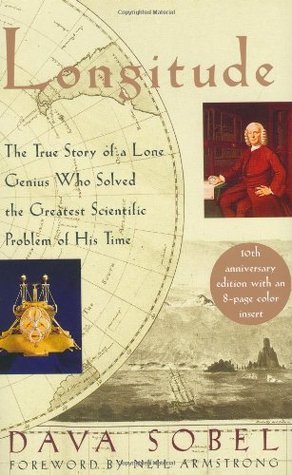Longitude Book Summary
The True Story of a Lone Genius Who Solved the Greatest Scientific Problem of His Time
TL;DR
Longitude tells the captivating story of John Harrison, a self-taught clockmaker who solved the monumental problem of determining longitude at sea, changing navigation forever.
What is Longitude about
In 'Longitude: The True Story of a Lone Genius Who Solved the Greatest Scientific Problem of His Time,' Dava Sobel explores the historical significance of the longitude problem, which plagued sailors of the 18th century. The inability to accurately measure longitude led to disastrous losses at sea. Sobel centers her narrative around John Harrison, a determined Yorkshire clockmaker whose relentless pursuit of a precise marine chronometer culminated in the H4, a groundbreaking invention that provided sailors with the critical capability to determine their east-west position. Through Harrison's journey and struggles against a skeptical scientific community, Sobel weaves a tale rich in scientific history and human perseverance.
Longitude 5 Key Takeaways
The Longitude Problem
The longitude problem was a significant challenge for sailors, making it difficult to determine their precise position at sea, leading to many shipwrecks and loss of lives.
John Harrison's Genius
John Harrison, a self-taught clockmaker, dedicated his life to creating a marine chronometer, ultimately developing the H4, which transformed navigation.
Scientific Resistance
Harrison faced significant opposition from the scientific establishment, which was skeptical of his methods and the validity of his inventions.
Parliament's Incentive
The British Parliament offered a £20,000 reward for a practical solution to the longitude problem, which fueled Harrison's long quest for accuracy.
The Role of Timekeeping
Precise timekeeping is essential for calculating longitude at sea, marking a turning point in maritime history with the development of accurate clocks.
Top Longitude Quotes
- In the quest for knowledge, one must often embark on solitary voyages.
- The key to navigation lies within the precise measurement of time.
- Genius is often a lonely pursuit, driven by passion and an unyielding quest for truth.
Who should read Longitude?
This book is ideal for readers interested in history, science, and the human spirit's resilience. It appeals to those who appreciate tales of innovation against the odds and the profound impact of scientific advancements on society.
Longitude Best Reviews
- The New York Times praised Sobel's book as 'a smartly written, engaging tale that interweaves science with human passion and determination.'
- The Washington Post lauded 'Longitude' for its ability to make a complex subject accessible, highlighting Sobel's skillful storytelling.
- Publishers Weekly noted Sobel's 'elegant prose and meticulous research' that brings the historical figures and their struggles vividly to life.
People also liked these summaries
Longitude FAQs
Why was longitude a problem?
The longitude problem arose because sailors could not accurately determine their east-west position at sea, leading to navigation errors and shipwrecks, making it one of the most significant challenges in maritime history.
How did John Harrison solve the longitude problem?
John Harrison solved the longitude problem by inventing the marine chronometer, specifically the H4, which provided accurate timekeeping at sea, thus allowing sailors to calculate their longitude with precision.

